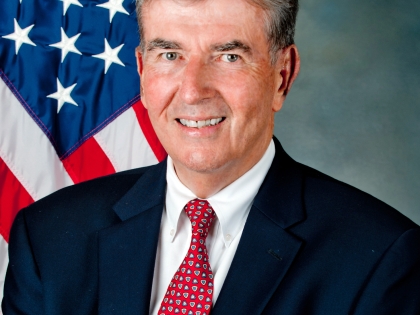
This new environmental education and stewardship program provides a great opportunity for young adults to gain valuable experience in the area of environmental conservation.
Neil D. Breslin
September 17, 2015
A new program aiming to put 50 young people to work on public improvement projects in the state's natural areas was rolled out Tuesday.
"There are 50 young people whose lives are going to be transformed," Lt. Gov.Kathy Hochul said during a brief news conference at Delmar's Five RiversEnvironmental Education Center to publicize the start of the Excelsior Conservation Corps, whose name and mission gives a nod to the Depression-era Civilian Conservation Corps.
The idea is to recruit a diverse group of people between 18 and 25 years of age, with an emphasis on getting veterans and members of minority groups involved.
For a 10-month period starting in January, participants will get training in skills such as trail building, carpentry and backcountry living.
After completing training at SUNY's Morrisville campus, they'll split up into teams to tackle conservation projects at parks, wilderness areas and forests across the state.
They'll spend their time on work like maintaining trails and constructing drainage channels and interpretative kiosks for parks and other outdoor areas.
Also on tap: marsh restoration and removal of invasive species.
The $1.9 million program began with the AmeriCorps public service group and the Student Conservation Association, a national organization that connects students with environmental stewardship programs.
As well as job training, and letting some people get an employed "gap year" between high school and college, the program should also help raise awareness of New York's great outdoors.
"We need to get people outside," acting Department of Environmental Commissioner Marc Gerstman said, noting that Five Rivers started life in the 1930s as a CCC project.
Craig Thompson, a retired Five Rivers director, said Five Rivers was originally a game farm.
During the Great Depression, numerous families relied on venison and game birds to supplement their pantries.
At the same time, state conservation officials were worried about declining wildlife populations.
During a tour covering part of the more-than-450-acre center, Thompson showed visitors an old barn that served as a hatchery for game birds such as pheasant and grouse.
He also explained how conservationists years ago devised "deer cakes" to help the animals survive in winter.
While it may seem hard to believe for Delmar residents who are accustomed to seeing deer roam freely through their back yards, Thompson said herds had thinned drastically during the 1930s.
In addition to deer cakes, biologists at Five Rivers, where a wildlife pathology center remains in place, first realized they could determine the age of deer by examining their teeth, allowing them to better track the health and size of deer herd.
"This turned deer management on its head," he said.

